5 Places You Can Visit If You Are At Anuradhapura ruins
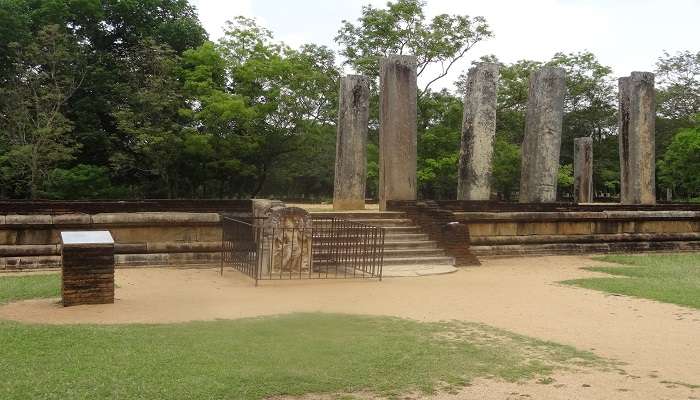
Anuradhapura is the ancient city of Sri Lanka. The first capital of Sri Lanka which is also now a UNESCO World Heritage Site, is significant from a historical, cultural, and religious point of view. The location is a significant pilgrimage site for followers due to its religious significance. There are numerous abandoned temples spread over an area of about 40 square kilometres. Anuradhapura Ruins, along with nearby sightseeing, is the best place to discover more about Sri Lanka’s past and culture.
History Of Anuradhapura Ruins
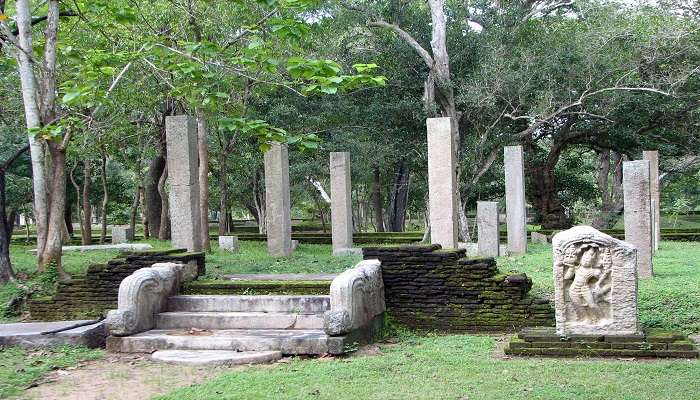
Northern and central Sri Lanka is home to the holy city of Anuradhapura. It’s arguably the most popular destination to the north of this island, after Jaffna. Back in the fifth century BC, Anuradhapura was one of the largest monastic cities in the world. From 380 BC to the 11th century AD, the city was Sri Lanka’s first capital and in government rule. More than 130 kings ruled it during its 1400-year history. When the king of Anuradhapura met the Indian monk Mahinda in the third century BC, Buddhism went from India to Sri Lanka. The numerous remnants of abandoned temples, royal palaces, and some amazing rock sculptures demonstrate the abundance of its cultural heritage. The ancient town was recognised as a UNESCO World Heritage Site in 1982 because of its historical significance, which dates back to the Sinhalese culture.
Must Read: Places To Visit In Anuradhapura
Places To Visit In Anuradhapura
The old royal city of Anuradhapura is bursting with UNESCO World Heritage sites, filled with stupas and temples. Some of the sights you can visit for free are:
1. Sri Maha Bodhi
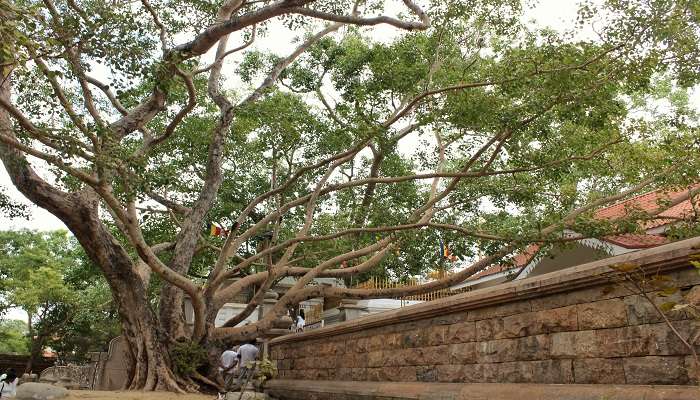
One of Sri Lanka’s holiest locations is the revered Sri Maha Bodhi tree, which is found in Mahavihara, the spiritual hub of Anuradhapura. Situated in the centre of the mediaeval city, this area is home to the world’s oldest historically verified tree, estimated to be two millennia old. There are also rumours that the Buddha gained enlightenment under the hallowed fig tree. Consequently, the hallowed Bodhi tree becomes the centre of Anuradhapura both physically and spiritually (because it is located in the middle of the temple, which encircles the tree).
2. Ruvanvelisaya Dagoba
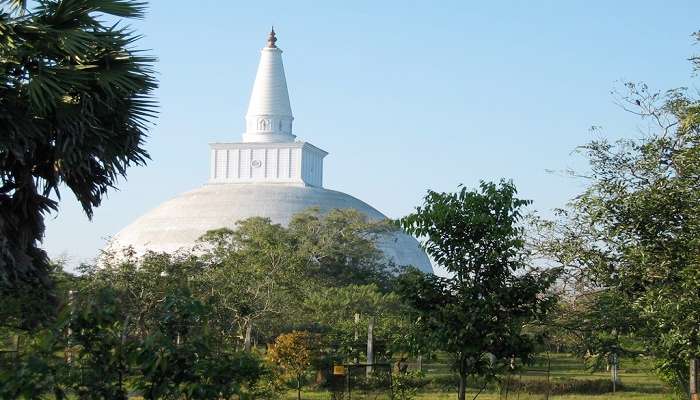
One of the most visited locations for Buddhists and one of the highest historical constructions in the world is this amazing spick and span white stupa. The world’s largest dagoba was once this one. Because of its extensive damage, it is currently only 55 metres tall, far shorter than when it was first built. It is still a striking sight and will give you a sense of insignificance. You will be in awe of its exquisite dome form and the wall of 344 elephant sculptures that guarded the building.
Suggested Read: Places To Visit Near Kandy
3. Isurumuniya Vihara
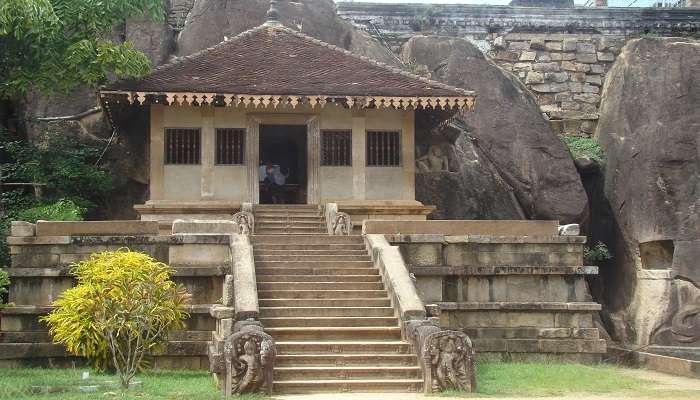
Isurumuni Viharaya, a Buddhist temple carved out of a rock that dates back to the time of Devanampiya Tissa (300 BC), is another stunning location. With its distinctive architecture, the rock temple is centred around a lotus pond and has amusing elephant sculptures. One may go to the summit around the rear, where a little viewing platform overlooking the nearby rice fields is unveiled. From this vantage point, the bell-shaped stupa off to the side is easier to see. Dress respectfully and abide by the rules of the temple.
4. Abhayagiri Dagoba
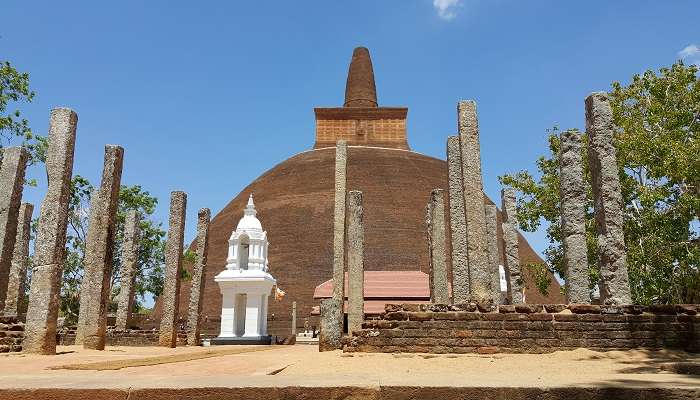
Thousands of Buddhist monks congregated in the Abhayagiri Dagoba, formerly the monastery’s ceremonial centre. This enormous dagoba was once more than 100 metres high and dates to the first century BC. It was considered to be among the finest buildings in antiquity, right up there with the well-known Giza pyramids. After repair, the red brick dagoba is now “only” around 75 metres tall, yet it is still stunning. From a distance, the enormous unplastered dome looms over the surrounding woodland.
Suggested Read: National Parks In Sri Lanka
Etiquette To Be Followed When Visiting Anuradhapura Ruins

Since the main locations are revered, getting ready and wearing modest clothing is crucial. This is out of respect for the culture, just like it is with every other sacred location in the globe, and you might not be permitted entry otherwise. Take off your shoes and hat before entering a temple or other sacred location. You are requested to dress appropriately. Long dresses with small sleeves are therefore useful for women. When wearing a shirt or shorts, having a sarong or lightweight scarf is always convenient. This applies to both genders.
Many pilgrims from Sri Lanka are dressed in white in the temples. In Buddhism, white is revered as a sacred colour that represents purity and receptivity to knowledge. So, if you are holding something white, that’s a nice alternative to choose. As a bonus, it helps reflect bright sunshine. Taking photos is permitted, but there are important guidelines to follow: Never turn around to face a stupa or Buddha statue, i.e., you are not allowed to take selfies.
When you are there, remember to round the dome of a dagoba or stupa in a clockwise direction, as that is often how visitors to the monument make their way around it.
Further Read: Pettah Floating Market In Sri Lanka
As you walk through the iconic Anuradhapura ruins, it’s impossible to forget the glorious past. These ancient ruins stand as a signal of the glorious achievements and rich cultural heritage of Sri Lanka. Despite the destruction that happened earlier, the ruins radiate an overwhelming feeling of pride that makes it possible to hear the echoes of a past time; the sounds of monks singing, a noisy and crowded city, and pilgrims paying respect to holy treasures. Anuradhapura is a city and a cultural and spiritual centre that influenced the entire region. Thus, whenever you plan a trip to Sri Lanka, trip to Sri Lanka you should pay this town a definite visit.
For our editorial codes of conduct and copyright disclaimer, please click here.
Cover Image Credit: Cherubino for Wikimedia Commons
Frequently Asked Questions About Anuradhapura Ruins
What are the best things to do in Anuradhapura?
Tourists can enjoy a lot of things in Anuradhapura such as getting enlightened about Buddhism and visiting the temples, and history enthusiasts can rejoice at the archaeological sites. There are also some great options for shopping in Anuradhapura such as shopping for souvenirs
What is the best time to visit Anuradhapura?
The best time to visit Anuradhapura is from April to October. This is the time when the weather is pleasant. You will be able to make the most of your trip
How can I go to Anuradhapura via air?
You can easily visit Anuradhapura by air as you reach the Colombo airport which is the nearest airport to Anuradhapura and is 183 km away. The tourists can easily get buses cabs to reach from there to Anuradhapura.
What is Anuradhapura famous for?
Anuradhapura is famous for being the ancient capital of Sri Lanka. This place is also famous for having the ruins that are preserved well of the Sinhala civilization. So, this place has a lot of historical significance. Not only that, this place also has the famous Maha Bodhiya which increases its spiritual significance as well.
What are the best places to visit in Anuradhapura?
The best places to visit in Anuradhapura are Sri Maha Bodhiya, Lovamahapaya, Abhayagiri Stupa, Twin Ponds, Ruwanweli Stupa, Aukana Buddha Statue, Thuparamaya, Elephant Pond, Isurumuniya, Mihintale.
People Also Read:
Monasteries In Ladakh Buddhist Monasteries in India Ritigala Forest Monastery

We all have to begin somewhere. This is where I start and I hope that my writings encourage you to begin. To new beginnings and conquering new places!











